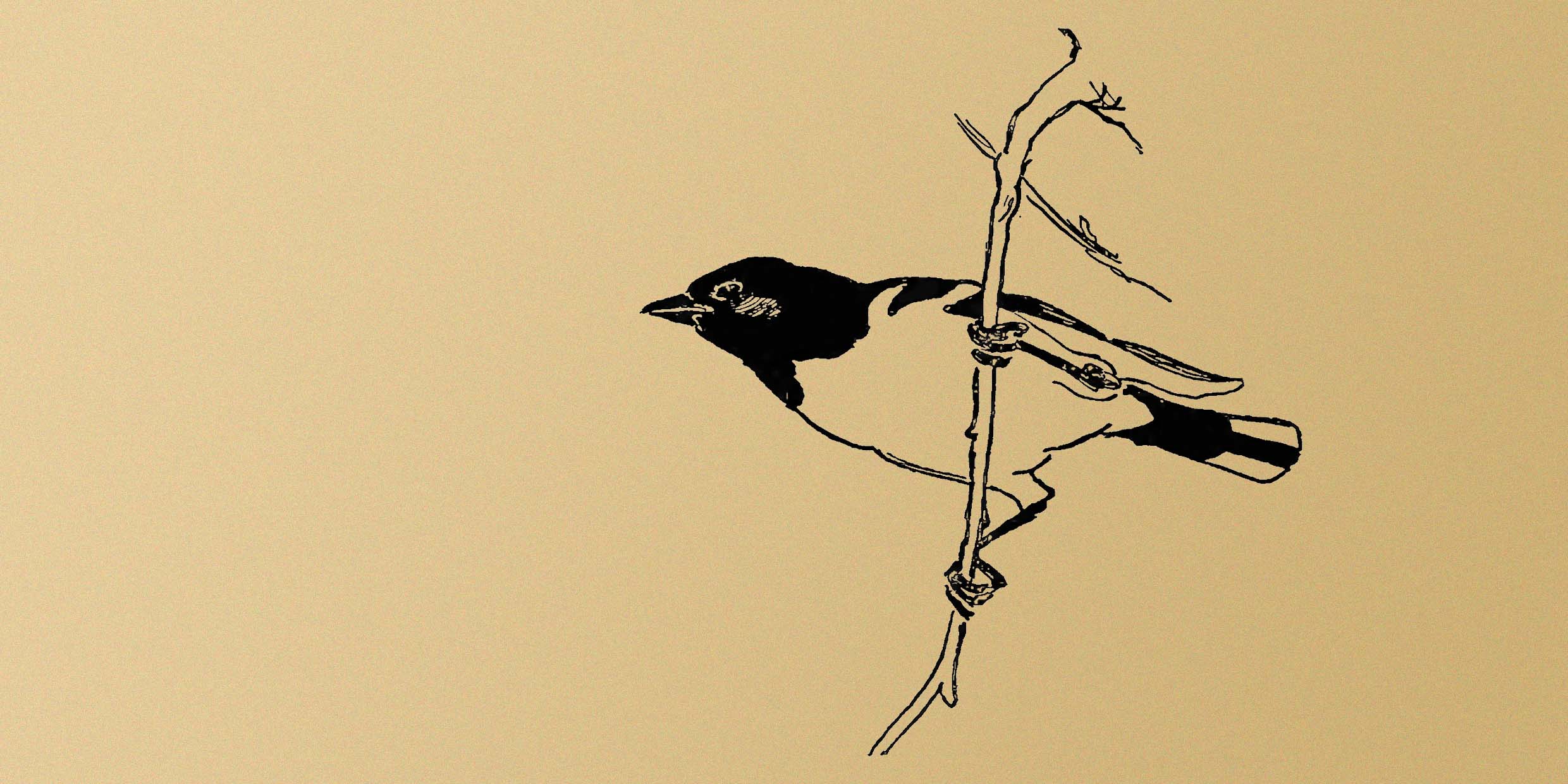Originally published 7 July 1997
In her autobiography, Pulitzer Prize-winning author Eudora Welty writes: “The events in our lives happen in a sequence in time, but in their significance to ourselves they find their own order, a timetable not necessarily — perhaps not possibly — chronological.”
Welty, now 88 years old, has lived most of her life in the house in Jackson, Mississippi, in which she was born, a house filled with clocks that ticked off linear minutes. Her stories and novels follow a different sort of clock, for which moments are weighted by significance — what she calls “the continuous thread of revelation.”
Let me follow such a thread.
One morning not long ago, walking to work along the usual path through woods and meadows, I happened upon a bluebird, a goldfinch, and a Baltimore oriole together in the same small cluster of trees.
Such a gift! Such a blessedness of color. I stood transfixed, letting my gaze drift from one bird to the other.
The timekeeper jumps — to Chattanooga, Tennessee, the early fifties. I am 16 years old, dreaming lazily in bed on a summer morning. I look out the window and see a bird unlike any I have seen before, brilliant orange, like a leaf afire.
I have a job that summer as stack boy for the Chattanooga Public Library. When I get to work I look for a bird book, and find Our Southern Birds by Emma Bell Miles. It isn’t the best book I might have found — the illustrations aren’t in color — but it helps me identify a Baltimore oriole.
More to the point, I am much taken by the author’s illustrations, sketches of great simplicity; a few lines, a few hatchings, and the birds come alive. For a few weeks I am inspired to sketch birds. Soon, I have a fat notebook full of drawings.
The timekeeper skips again. It is four decades later, the early nineties. I am browsing a bookstore in Chattanooga and come across a paperback reprint of Our Southern Birds, published in 1983 by the Walden’s Ridge Historical Association. In a moment of nostalgia, I buy the book and rediscover Emma Bell Miles.
She is born on October 19, 1879, to schoolteacher parents in Rabbit Hash, Kentucky. At the age of 11, she moves with her family to wooded Walden’s Ridge near Chattanooga. The girl is interested in nature and in art. At age 20, she goes away to the St. Louis School of Art, but after two winters returns to her beloved mountain. She marries Frank Miles and bears five children.
Her life is hard. The family lives in a shack. Emma sells stories, poems, and paintings to make ends meet, including a book called The Spirit of the Mountains, drawn from her experience as a school teacher on Walden’s Ridge. Later, the book will become a treasured record of the life and songs of the mountain people. Her health breaks. Tuberculosis.
In and out of the sanatorium, Emma moves with her family to Chattanooga, where she paints and lectures on birds to school and civic groups. She acquires a modest local fame, but clings to life by a thread. The thread is her love of birds.
In the spring of 1918, a Chicago book publisher calls on Emma and together they plan a book on southern birds. Preparing the text and illustrations keeps her alive for another summer. Our Southern Birds comes off the press in March 1919, and the publisher brings copies to her house. Two weeks later she dies, at age 39.
Another fold in the fabric of time — to the spring of 1997. I am again reading Emma Bell Miles.
The bluebird: “A wintry roadside may be suddenly illumined by the descent of a dozen bluebirds on a sumach bush, or a pokeweed in late summer may be laid flat under the weight of a flock coming to eat purple berries.”
The goldfinch: “The song is quite canary-like, but softer, with a variety of pretty chirps and trills. On the wing, their undulating course is punctuated by a twitter described by the mountain people as ‘Meat’s cheaper — meat’s cheaper.’ ”
The Baltimore oriole: “Its color is splendid, as if brought from the tropical jungle, rich orange, with black wings and tail.”
Emma Bell Miles intended her little book as a teaching guide for school children. In an epilogue, she advises teachers to encourage their students to procure a good notebook, keep records of their observations (“…the most important of them should be written in ink…”), and discuss in class such questions as “Why birds should be protected” and “How we may protect the birds.”
I was one of many youngsters touched by her talent, and it is with pleasure that I acknowledge here — in the folding and refolding of time — those few weeks of sketching birds at age 16 that helped prepare me to appreciate a congregation of color in a cluster of trees more than four decades later.
Emma Bell Miles lived for common things, she said — “smells of hot meadows, of rain-wet plowed land, of barn lofts and kitchen corners.” And birds, of course. It might have been her life that Eudora Welty was describing when she wrote: “As you have seen, I am a writer who came from a sheltered life. A sheltered life can be a daring life as well. For all serious daring starts from within.”



